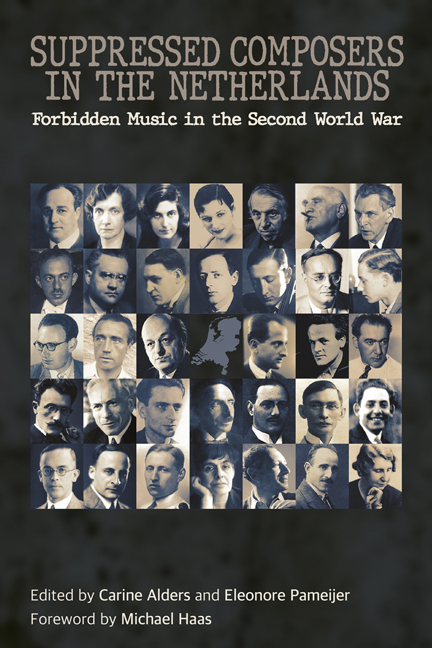28 - Theo Smit Sibinga
Published online by Cambridge University Press: 09 May 2024
Summary
After Theo Smit Sibinga's death, Everard van Royen, the director of the Amsterdam Music Lyceum, praised him as a sensitive and skilful composer and, according to Van Royen, ‘the beauty of the ancient civilisation of the Indonesian archipelago had influenced him during his 25 years in the tropics’. His music is transparent and melodic, and he was attracted to modern French culture. As a composer he was not particularly well known during his lifetime, as he was not the kind of man to draw attention to himself. Many of his manuscripts were lost during his captivity in the camps on the island of Java in the Dutch East Indies.
Theodore (Theo) Henri Smit Sibinga was born on 2 September 1899 in Bandung, the capital of West Java Province in the Dutch East Indies, and was still a toddler when his family returned to the Netherlands. His father, Egbert Smit Sibinga, was a mechanical engineer and his mother, Sophie Schim van der Loeff, was a piano teacher and the co-founder of the Amsterdam Music Lyceum. By the age of seven, Theo had written his first compositions. After high school, he took cello lessons with Bertrand Drilsma (1879–1943), a cellist with the Concertgebouw Orchestra, and Marix Loevensohn (1880–1943), the principal cellist of the Concertgebouw from 1915 to 1936, and later with the French cellist Gérard Hekking (1879–1942, principal cellist of the Concertgebouw from 1903 to 1914). He also enjoyed lessons in instrumentation theory with the composer Cornelis Dopper.
Smit Sibinga returned to the Dutch East Indies in 1921, against his father's wishes, with a teaching diploma from the Nederlandsch Muziekpedagogisch Verbond (Netherlands Music Pedagogical Association). After two years, he had to give up a promising career as a cellist because of a tumour on his left hand. Although an operation was unsuccessful, he still performed occasionally, being able to tackle repertoire as demanding as the Rachmaninov Cello Sonata. On 13 May 1932, the De Preangerbode, the Dutch-language daily newspaper, reported: ‘an extraordinarily talented cellist, rewarded by a thunderous applause. That certainly wasn't the practice of an amateur!’
- Type
- Chapter
- Information
- Suppressed Composers in the NetherlandsForbidden Music in the Second World War, pp. 257 - 264Publisher: Boydell & BrewerPrint publication year: 2024



